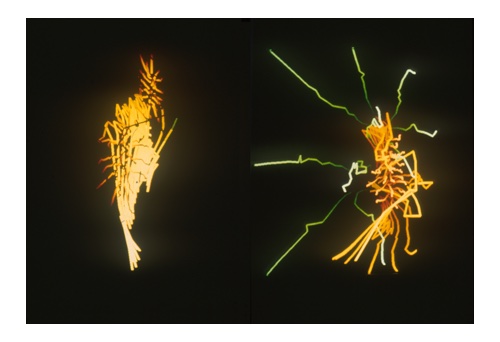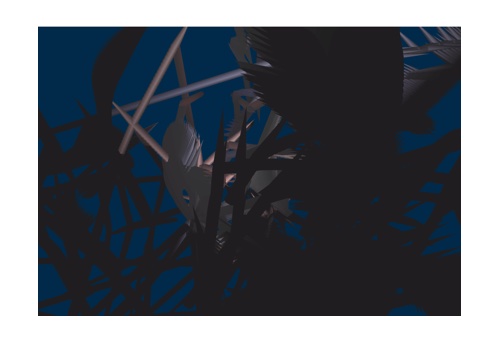Stephen Bell
Stephen Bell has roots in the East Midlands, having been born near Rugby in 1955, with relatives in the area. After studying Fine Art at Bristol Polytechnic, in 1977 he started using computer programming to make work as a student at The Slade School of Art. In 1984 as Artist in Residence at the University Kent at Canterbury (UKC) computing laboratory, Bell began a project to investigate the viability of interactive computer art. He wanted to come up with something different to the popular use of fractals to create images. At UKC he successfully designed a generative system of algorithms to produce abstract images based upon animal and human social behaviour, including conflict and collaboration, and other interactive phenomena to generate computer graphic forms to interact with, animate and print. He called the system ‘Smallworld’.
To enable him to build these Smallworld generative programs into interactive works he joined Prof. Edmonds’ Loughborough University of Technology Computer-Human Interface research unit (LUTCHI) as a PhD student, living and working in Loughborough and Leicester from 1985-89. This gave Bell almost unique access to some of the most advanced computer graphic technology in the world, because at this time, Jonathan Waldern was pioneering research into VR at LUTCHI and acquired the first two non-commercial Silicon Graphics IRIS workstations in the country, which Bell helped to install and then had access to, to develop his interactive Smallworld art works. Versions of Smallworld that visitors were able to interact with were first exhibited in Brighton in 1987 and Middlesbrough and The Netherlands in 1988.
The works in this show include Prospero and Caliban, two images produced whilst listening to a radio broadcast of The Tempest, which were exhibited in Brighton. Miranda, a companion piece was created in 2023 using the latest version of Smallworld developed using Apple computers. A video recording the exploration of shapes generated by Smallworld which led to capture of the Miranda image can be seen on Bell’s website
Bell received his PhD from Loughborough University of Technology in 1991. He completed his decade of enquiry into interactive art at the National Centre for Computer Animation, (NCCA) which he helped to establish in Bournemouth after having started to work there as a lecturer in 1989 to teach artists how to use computers. He retired from teaching in 2017 and currently lives in Bournemouth. He still makes his art by continuing to develop his Smallworld programs.
Artworks
Prospero and Caliban (1987)

Miranda (2023)

